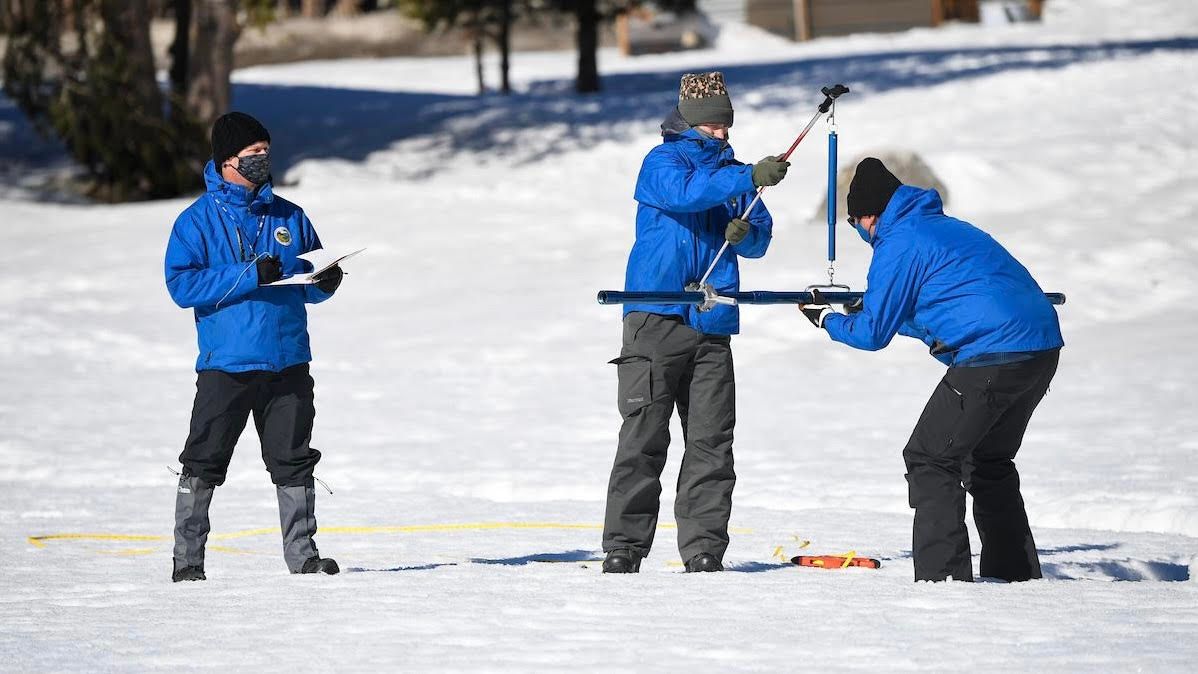SACRAMENTO, Calif. — Following the driest consecutive January and February California has seen in more than a century, the state’s Department of Water Resources is expecting a third consecutive year of drought.
The state snowpack is 63% of average for this time of year, the agency reported Tuesday during its third snow survey of the year at Phillips Station in the Sierra Nevada mountains.
“We were all encouraged after that rain and snow in October and December, but after how dry these last two months were, the results today are that much more important,” said Sean de Guzman, manager of the snow surveys and water supply forecasting unit for the California Department of Water Resources.
Just a month ago, when the agency conducted its last snow survey, the snowpack was 92% of average, following a major December snowfall. California’s wettest months are typically December through February, producing more than half of the state’s annual rainfall, but in January and February “it really didn’t snow,” de Guzman said.
While March is likely to see “better chances for more rain and snow in Northern California, including the Northern Sierra, there’s not as much confidence that snowpack in the Central and Southern Sierra will see that same benefit,” de Guzman added.
Unusually high temperatures in February have already caused some of the state’s snowpack to melt and run off, though the bulk remained intact. About one-third of the state’s water supply comes from snowpack runoff.
The department uses snow depth and water content data to predict the spring and summer runoff that determines its water supply forecast for the coming year. Tuesday’s measurement at Phillips Station showed a snow depth of 35 inches and a snow water content of 16 inches — down from 48.5 inches of snow and 19 inches of water content a month ago.
Phillips Station is one of more than 260 snow courses throughout the state that the department measures each winter and early spring to determine how much water will melt and run off to reservoirs in the warmer months.
The below-average snowpack is “not enough to fill up the reservoirs,” de Guzman said. “We only have a month left to build up our snowpack. Barring any unforeseen miracle March, which we don’t see coming, we’ll end this year below average.”
Statewide, reservoirs are currently at 73% of average. Lake Oroville is 47% full, and Lake Shasta is 37% full.
“This winter has demonstrated that as the world continues to warm, we’re seeing average conditions become more rare. Precipitation is moving toward extremes. Even when we get large storms and heavy snowfall early in the season, after a few dry weeks, we go back to below normal,” said Jeremy Hill, manager of the hydrology and flood operations branch for the Department of Water Resources. “We cannot let our guard down when preparing for droughts and continuing to conserve water.”



